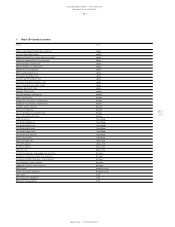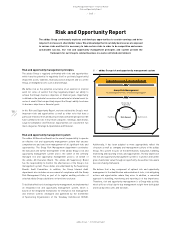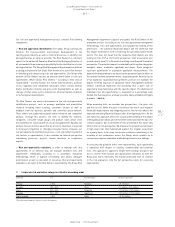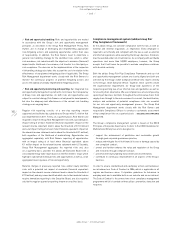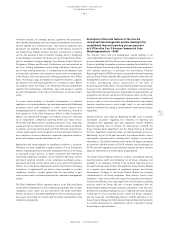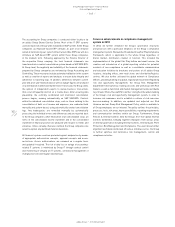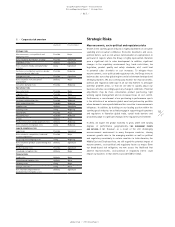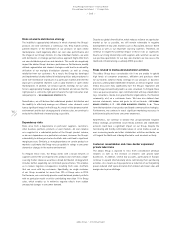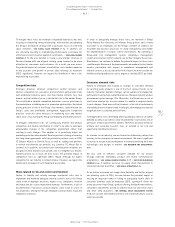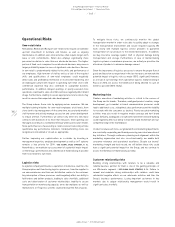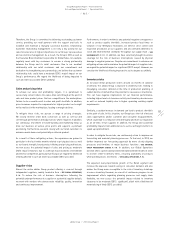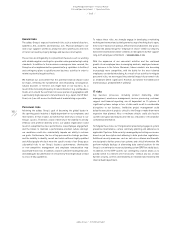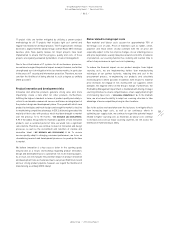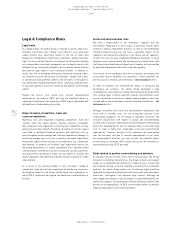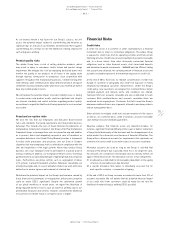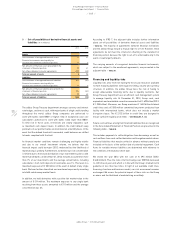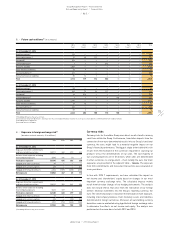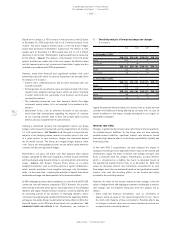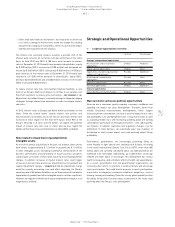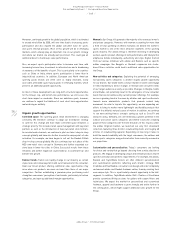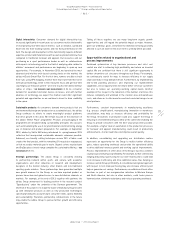Reebok 2013 Annual Report Download - page 171
Download and view the complete annual report
Please find page 171 of the 2013 Reebok annual report below. You can navigate through the pages in the report by either clicking on the pages listed below, or by using the keyword search tool below to find specific information within the annual report.
adidas Group
/
2013 Annual Report
Group Management Report – Financial Review
167
2013
/
03.5
/
Risk and Opportunity Report
/
Operational Risks
Therefore, the Group is committed to delivering outstanding customer
service, providing our retail partners with the support and tools to
establish and maintain a mutually successful business relationship.
Customer relationship management is not only a key activity for our
sales force but also of highest importance to our Group’s top executives
and second-line management. As a result, the Group’s CEO as well as
the Executive Board member responsible for Global Sales, for example,
regularly meet with key customers to ensure a strong partnership
between the Group and its retail customers. Due to our excellent
relationship with our retail customers and our commitment and
dedication to strengthening our partnerships, we believe that customer
relationship risks could have a moderate (2012: major) impact on our
Group’s performance. We regard the likelihood of being impacted to
such an extent as possible (2012: unlikely).
Sales and pricing risks
To achieve our sales and profitability targets, it is paramount to
successfully convert orders into sales, drive sell-through at the point of
sale and have product prices that are competitive in the marketplace.
Failure to do so would result in sales and profit shortfalls. In addition,
price increases required to compensate for higher product costs might
not be realised in the marketplace, leading to margin declines.
To mitigate these risks, we pursue a range of pricing strategies.
We closely monitor order book conversion as well as sell-out and
sell-through performance and adjust prices where required. In addition,
our continuous investment in brand-building and marketing helps us
drive our business at various price points and supports a premium
positioning. Furthermore, we work closely with our retail customers to
minimise mark-downs and potentially re-allocate product.
As a result of these mitigating actions, the experience we gained in
particular in the last twelve months related to pricing decisions as well
as our brand strength, broad product offering and pricing architecture,
we now assess the potential impact of sales and pricing as moderate
(2012: major). However, due to a difficult macroeconomic environment
and intense competition, particularly in Europe, we regard the likelihood
of being affected to such an extent as probable (2012: possible).
Supplier risks
Almost the entire adidas Group product offering is sourced through
independent suppliers, mainly located in Asia
/
SEE GLOBAL OPERATIONS,
P. 94. To reduce the risk of business interruptions following the
potential underperformance of a supplier or a potential supplier default,
we work with vendors who demonstrate reliability, quality, innovation
and continuous improvement.
Furthermore, in order to minimise any potential negative consequences
such as product quality shortfalls, increased product lead times or
violation of our Workplace Standards, we enforce strict control and
inspection procedures at our suppliers and also demand adherence to
social and environmental standards throughout our supply chain
/
SEE
SUSTAINABILITY, P. 111. In addition, we have selectively bought insurance
coverage for the risk of business interruptions caused by physical
damage to supplier premises. Despite our commitment to enhance our
mitigating actions and to minimise the potential impact of supplier risks,
we regard the potential impact as significant (2012: major). However, we
consider the likelihood of being impacted to such a degree as unlikely.
Inventory risks
As we place initial production orders around six months in advance
of delivery, the adidas Group is exposed to inventory risks relating to
misjudging consumer demand at the time of production planning. A
sudden decline in demand has the potential to cause excess inventories.
This can have negative implications for our financial performance,
including higher levels of clearance activity and inventory obsolescence
as well as reduced liquidity due to higher operating working capital
requirements.
Similarly, a sudden increase in demand can lead to product shortfalls
at the point of sale. In this situation, our Group faces the risk of missed
sales opportunities and/or customer and consumer disappointment,
which could lead to a reduction in brand loyalty and hurt our reputation
as an on-time, in-full supplier. In addition, the Group faces potential
profitability impacts from additional costs such as airfreight in efforts to
speed up replenishment.
In order to mitigate these risks, we continuously strive to improve our
forecasting and material planning processes. To that end, in 2013, we
further improved our forecasting approach by more closely aligning
processes and timelines of major business functions
/
SEE INTERNAL
GROUP MANAGEMENT SYSTEM, P. 118. In addition, our Global Operations
function offers sophisticated and tailored replenishment models in order
to shorten order-to-delivery times, ensuring availability of products
while avoiding excess inventories
/
SEE GLOBAL OPERATIONS, P. 94.
The expected over-proportionate growth of the Retail segment will
increase the exposure towards swings in consumer demand, and also
makes the Group more susceptible to the risk of inventory shrinkage
or excess inventory. However, as a result of continuous progress in our
improvement efforts regarding planning processes and supply chain
flexibility, we now assess the potential impact related to inventory
clearance to be moderate (2012: significant), albeit with a likelihood of
materialising of likely (2012: possible).


